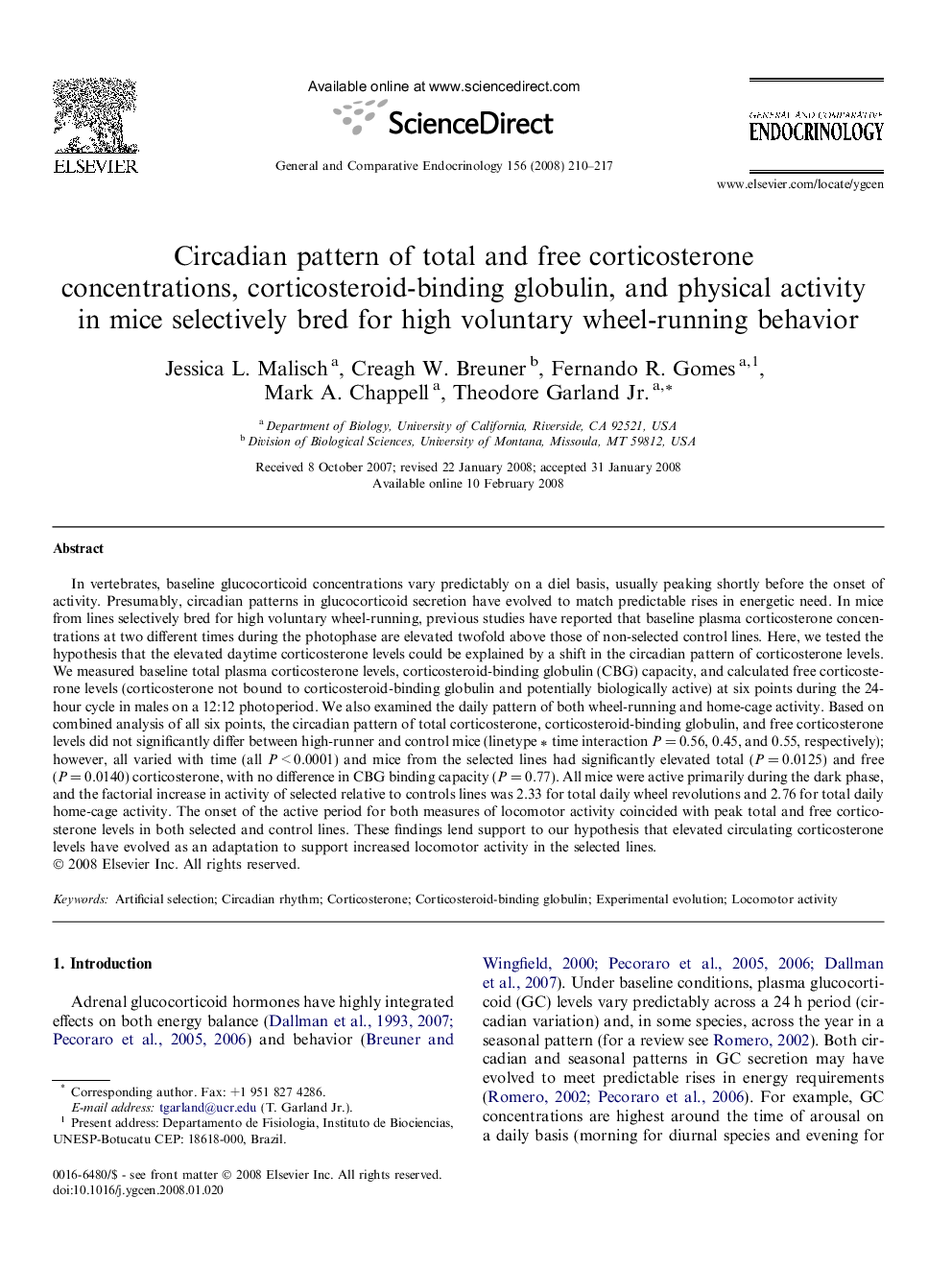| Article ID | Journal | Published Year | Pages | File Type |
|---|---|---|---|---|
| 2801639 | General and Comparative Endocrinology | 2008 | 8 Pages |
In vertebrates, baseline glucocorticoid concentrations vary predictably on a diel basis, usually peaking shortly before the onset of activity. Presumably, circadian patterns in glucocorticoid secretion have evolved to match predictable rises in energetic need. In mice from lines selectively bred for high voluntary wheel-running, previous studies have reported that baseline plasma corticosterone concentrations at two different times during the photophase are elevated twofold above those of non-selected control lines. Here, we tested the hypothesis that the elevated daytime corticosterone levels could be explained by a shift in the circadian pattern of corticosterone levels. We measured baseline total plasma corticosterone levels, corticosteroid-binding globulin (CBG) capacity, and calculated free corticosterone levels (corticosterone not bound to corticosteroid-binding globulin and potentially biologically active) at six points during the 24-hour cycle in males on a 12:12 photoperiod. We also examined the daily pattern of both wheel-running and home-cage activity. Based on combined analysis of all six points, the circadian pattern of total corticosterone, corticosteroid-binding globulin, and free corticosterone levels did not significantly differ between high-runner and control mice (linetype ∗ time interaction P = 0.56, 0.45, and 0.55, respectively); however, all varied with time (all P < 0.0001) and mice from the selected lines had significantly elevated total (P = 0.0125) and free (P = 0.0140) corticosterone, with no difference in CBG binding capacity (P = 0.77). All mice were active primarily during the dark phase, and the factorial increase in activity of selected relative to controls lines was 2.33 for total daily wheel revolutions and 2.76 for total daily home-cage activity. The onset of the active period for both measures of locomotor activity coincided with peak total and free corticosterone levels in both selected and control lines. These findings lend support to our hypothesis that elevated circulating corticosterone levels have evolved as an adaptation to support increased locomotor activity in the selected lines.
